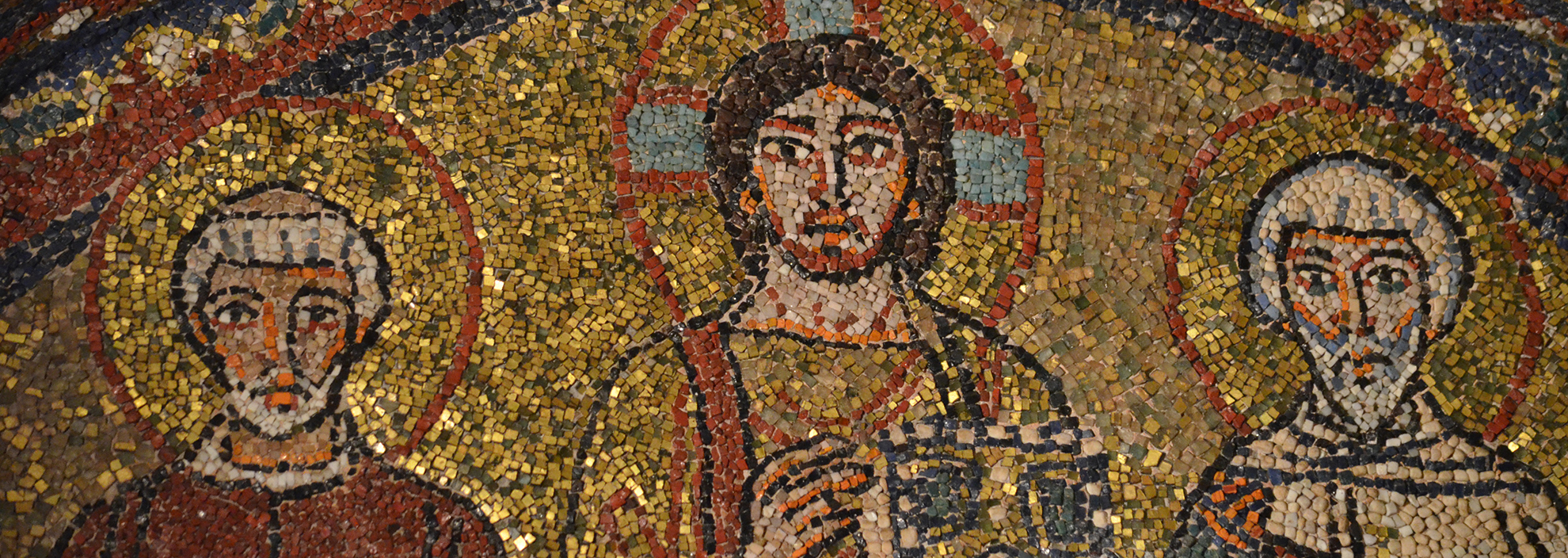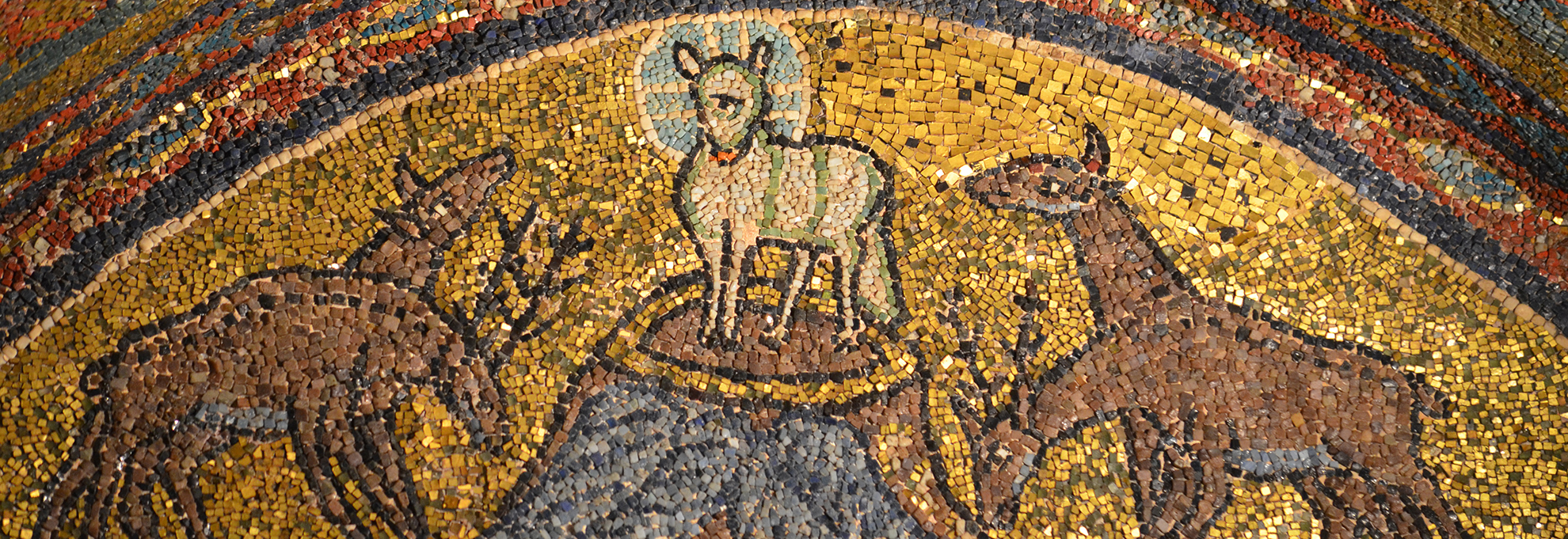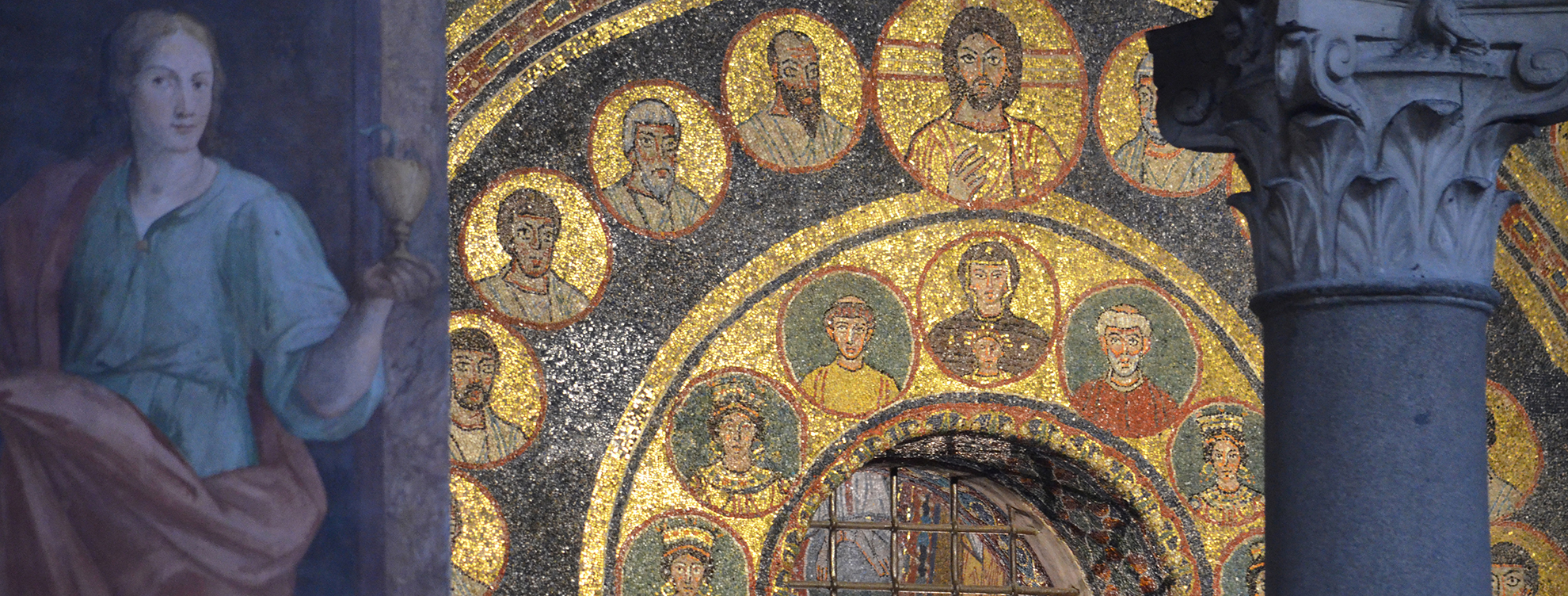- Home
- La Gregoriana
- 58 - To See All Things New in Christ
- Christian and Medieval Antiquities, a Diploma for enhancing knowledge of Rome
Share:

Rome contains not only a unique artistic heritage,
but the roots of faith.
The new Diploma in Christian and Medieval Antiquities
combines lectures, visits to monuments and a Documentation Workshop
to provide methods and tools for approaching
the analysis of documents and monuments correctly.
Upon his meeting with the Pontifical Gregorian University community on April 14, 2014, Pope Francis urged us to focus, first of all, on “appreciating the very place in which you work and study, that is, the City and above all the Church of Rome. Here there is a past and there is a present. There are the roots of faith: the memory of the Apostles and of the Martyrs; [...] All of this should not be taken for granted! It must be experienced and appreciated, with a commitment that is partly institutional and partly personal.” The new Diploma in Christian and Medieval Antiquities, offered by the Faculty of History and Cultural Heritage of the Church, responds to this call by following in the footsteps of the Ancient and Medieval Church History studies offered at the Gregorian since 1932. The new two-semester course is specifically focused on the history of the Church of Rome through written, monumental and historical-artistic sources.
Learning a method, acquiring the tools
The Diploma - moderated by Dr Ottavio Bucarelli, Pro-Director of the Department of Cultural Heritage of the Church - gives a firm grounding to students wishing to pursue studies in history, history of art and archaeology, delving into subjects of interest relevant to scientific research and pastoral activities. Since ancient times Rome has been the centre of the Orbis christianus. Its uniqueness lies in the fact that it is a political capital and a holy city, a destination for pilgrims visiting the tombs of the martyrs; it saw the founding of the catacombs and the first great Constantinian basilicas, a Petrine See providing impetus to the evangelising mission of the Church in the world.
The subject area of the Diploma in Christian and Medieval Antiquities covers a historical period that goes from the discovery of the "Trophy of Gaius"(second half of the second century A.D.), erected above St. Peter's tomb, to the entire Middle Ages.
The Diploma programme aims to provide students with the necessary background knowledge and tools to analyse documentation and monuments, which they will then adapt to the local context they choose to work in. Rome, civitas christiana par excellence, with its two-thousand-year old history of uninterrupted layers and architectural superimpositions extending to the present day, is a unique open-air workshop where students can learn how to apply and enhance what they have learned in the classroom.
Experiential learning: monuments and documentation
The Diploma programme consists of eight compulsory courses (Latin Language, History of the Ancient Church, History of the Medieval Church, Historiography of the Ancient and Medieval Church, Ecclesiastical Geography and Topography of the Orbis christianus, Christian Archaeology, History of Ancient Christian Architecture, History of Ancient Christian Art, History of Medieval Christian Art); two optional courses to be chosen by the student from among those offered by the Faculty of History and Cultural Heritage of the Church; the Documentation Workshop; and a final paper, written under the guidance of a professor from the Diploma course.
Enrolled students will visit the monuments of the city, visible signs of the history of the Church and the papacy, in addition to lectures. The visits will be complemented by practical exercises in the Documentation Workshop, an inherent feature of the programme. The proper documentation and evaluation of an artefact is in fact the first step for successful learning: to understand its meaning, its purpose and its preserved historical heritage. The activities of the Workshop allow students to gain first-hand experience of documents and monuments. It covers the areas of Church history (study of the Liber Pontificalis text), archaeology (documentation on the architecture of early Christian or early medieval churches in Rome), epigraphy (cataloguing of epigraphic texts) and history of art (analysis and cataloguing of artefacts of historical and artistic value).
This makes the Diploma in Christian and Medieval Antiquities a valuable tool for promoting the study of Christian monuments and institutions from antiquity to the Middle Ages, of which Rome constitutes a unique "case study.”




